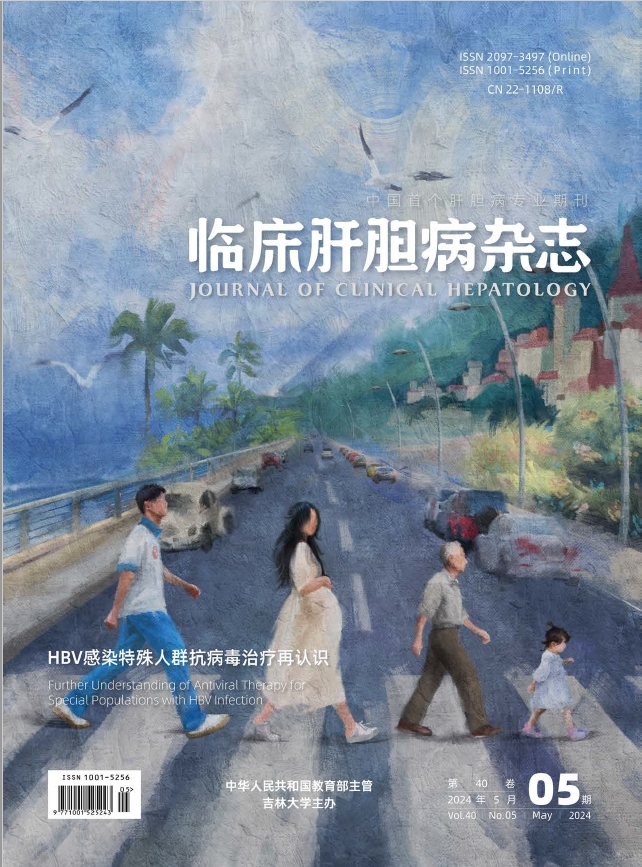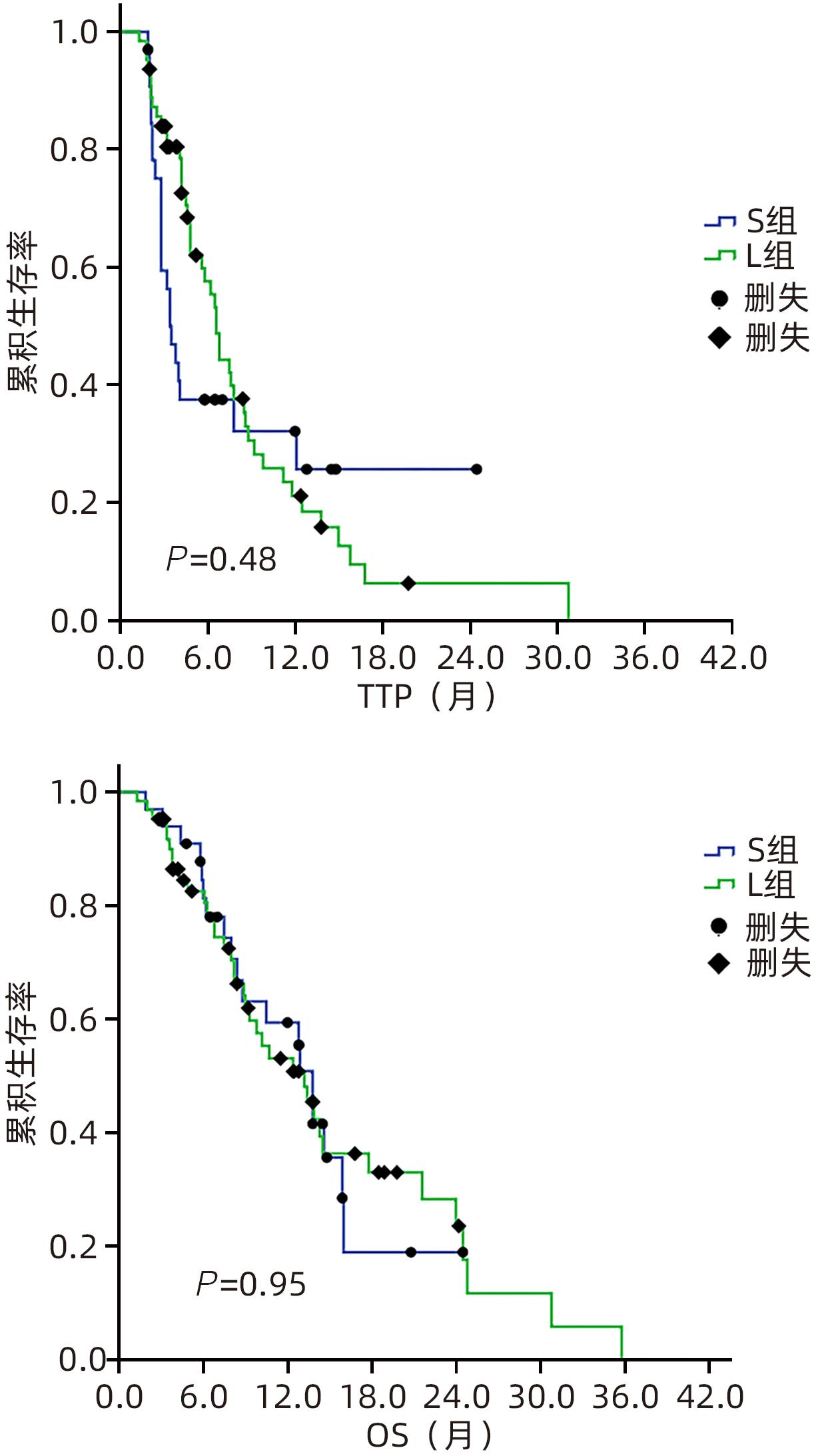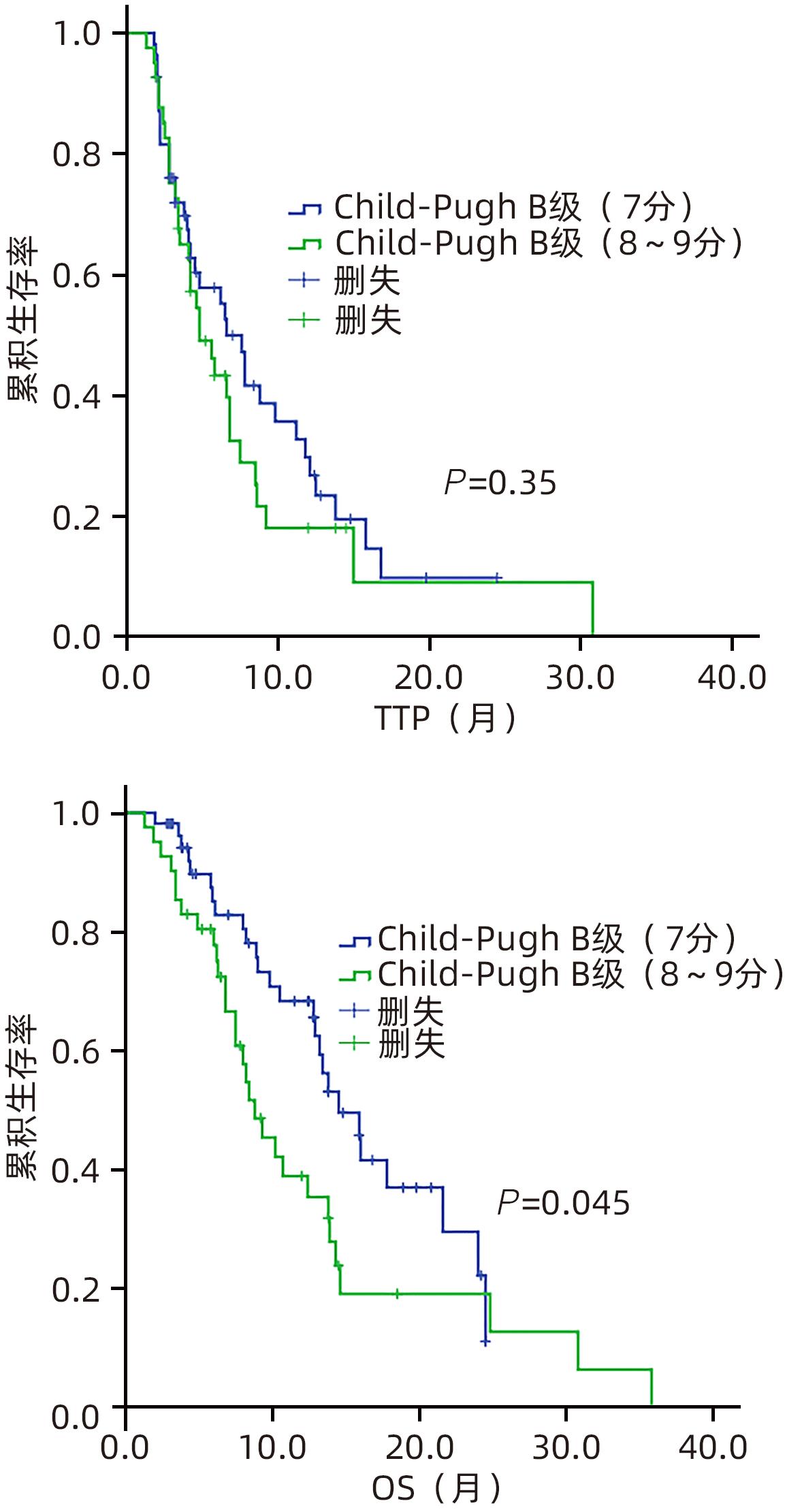| [1] |
MITTAL S, EL-SERAG HB, SADA YH, et al. Hepatocellular carcinoma in the absence of cirrhosis in United States veterans is associated with nonalcoholic fatty liver disease[J]. Clin Gastroenterol Hepatol, 2016, 14( 1): 124- 131. e 1. DOI: 10.1016/j.cgh.2015.07.019. |
| [2] |
CHAPIN WJ, HWANG WT, KARASIC TB, et al. Comparison of nivolumab and sorafenib for first systemic therapy in patients with hepatocellular carcinoma and Child-Pugh B cirrhosis[J]. Cancer Med, 2023, 12( 1): 189- 199. DOI: 10.1002/cam4.4906. |
| [3] |
MARRERO JA, KUDO M, VENOOK AP, et al. Observational registry of sorafenib use in clinical practice across Child-Pugh subgroups: The GIDEON study[J]. J Hepatol, 2016, 65( 6): 1140- 1147. DOI: 10.1016/j.jhep.2016.07.020. |
| [4] |
MCNAMARA MG, SLAGTER AE, NUTTALL C, et al. Sorafenib as first-line therapy in patients with advanced Child-Pugh B hepatocellular carcinoma-a meta-analysis[J]. Eur J Cancer, 2018, 105: 1- 9. DOI: 10.1016/j.ejca.2018.09.031. |
| [5] |
CHOI WM, LEE DB, SHIM JH, et al. Effectiveness and safety of nivolumab in child-pugh B patients with hepatocellular carcinoma: A real-world cohort study[J]. Cancers(Basel), 2020, 12( 7): 1968. DOI: 10.3390/cancers12071968. |
| [6] |
OGUSHI K, CHUMA M, UOJIMA H, et al. Safety and efficacy of lenvatinib treatment in child-pugh A and B patients with unresectable hepatocellular carcinoma in clinical practice: A multicenter analysis[J]. Clin Exp Gastroenterol, 2020, 13: 385- 396. DOI: 10.2147/CEG.S256691. |
| [7] |
KUDO M, MATILLA A, SANTORO A, et al. CheckMate 040 cohort 5: A phase I/II study of nivolumab in patients with advanced hepatocellular carcinoma and Child-Pugh B cirrhosis[J]. J Hepatol. 2021, 75( 3): 600- 609. DOI: 10.1016/j.jhep.2021.04.047. |
| [8] |
FINN RS, QIN SK, IKEDA M, et al. Atezolizumab plus Bevacizumab in Unresectable Hepatocellular Carcinoma[J]. N Engl J Med, 2020, 382( 20): 1894- 1905. DOI: 10.1056/NEJMoa1915745. |
| [9] |
KUDO M, FINN RS, QIN SK, et al. Lenvatinib versus sorafenib in first-line treatment of patients with unresectable hepatocellular carcinoma: A randomised phase 3 non-inferiority trial[J]. Lancet, 2018, 391( 10126): 1163- 1173. DOI: 10.1016/S0140-6736(18)30207-1. |
| [10] |
FAN J, GAO Q. Immunotherapy for hepacellular carcinoma: where there is hope, there is brightness[J]. Chin J Dig Surg, 2022, 21( 2): 199- 204. DOI: 10.3760/cma.j.cn115610-20220215-00080. |
| [11] |
General Office of National Health Commission. Standard for diagnosis and treatment of primary liver cancer(2022 edition)[J]. J Clin Hepatol, 2022, 38( 2): 288- 303. DOI: 10.3969/j.issn.1001-5256.2022.02.009. |
| [12] |
MISCHEL AM, ROSIELLE DA. Eastern cooperative oncology group performance status#434[J]. J Palliat Med, 2022, 25( 3): 508- 510. DOI: 10.1089/jpm.2021.0599. |
| [13] |
LLOVET JM, LENCIONI R. mRECIST for HCC: Performance and novel refinements[J]. J Hepatol, 2020, 72( 2): 288- 306. DOI: 10.1016/j.jhep.2019.09.026. |
| [14] |
SEYMOUR L, BOGAERTS J, PERRONE A, et al. iRECIST: Guidelines for response criteria for use in trials testing immunotherapeutics[J]. Lancet Oncol, 2017, 18( 3): e143- e152. DOI: 10.1016/s1470-2045(17)30074-8. |
| [15] |
US Department of Health and Human Services, National Institutes of Health, National Cancer Institute. Common Terminology Criteria for Adverse Events(CTCAE), Version 5.0. 2017. https://evs.nci.nih.gov/ftp1/CTCAE/CTCAE_5.0 https://evs.nci.nih.gov/ftp1/CTCAE/CTCAE_5.0 |
| [16] |
ABOU-ALFA GK, AMADORI D, SANTORO A, et al. Safety and efficacy of sorafenib in patients with hepatocellular carcinoma(HCC) and child-pugh A versus B cirrhosis[J]. Gastrointest Cancer Res, 2011, 4( 2): 40- 44.
|
| [17] |
KØSTNER AH, SORENSEN M, OLESEN RK, et al. Sorafenib in advanced hepatocellular carcinoma: A nationwide retrospective study of efficacy and tolerability[J]. Sci World J, 2013, 2013: 931972. DOI: 10.1155/2013/931972. |
| [18] |
XIE ER, YEO YH, SCHEINER B, et al. Immune checkpoint inhibitors for child-pugh class B advanced hepatocellular carcinoma: A systematic review and meta-analysis[J]. JAMA Oncol, 2023, 9( 10): 1423- 1431. DOI: 10.1001/jamaoncol.2023.3284. |
| [19] |
FINN RS, KUDO M, MERLE P, et al. LBA34 Primary results from the phase III LEAP-002 study: Lenvatinib plus pembrolizumab versus lenvatinib as first-line(1L) therapy for advanced hepatocellular carcinoma(aHCC)[J]. Ann Oncol, 2022, 33: S1401. DOI: 10.1016/j.annonc.2022.08.031. |
| [20] |
QIN SK, CHAN SL, GU SZ, et al. Camrelizumab plus rivoceranib versus sorafenib as first-line therapy for unresectable hepatocellular carcinoma(CARES-310): A randomised, open-label, international phase 3 study[J]. Lancet, 2023, 402( 10408): 1133- 1146. DOI: 10.1016/S0140-6736(23)00961-3. |
| [21] |
REN ZG, XU JM, BAI YX, et al. Sintilimab plus a bevacizumab biosimilar(IBI 305) versus sorafenib in unresectable hepatocellular carcinoma(ORIENT-32): A randomised, open-label, phase 2-3 study[J]. Lancet Oncol, 2021, 22( 7): 977- 990. DOI: 10.1016/S1470-2045(21)00252-7. |
| [22] |
WU CJ, LEE PC, HUNG YW, et al. Lenvatinib plus pembrolizumab for systemic therapy-naïve and-experienced unresectable hepatocellular carcinoma[J]. Cancer Immunol Immunother, 2022, 71( 11): 2631- 2643. DOI: 10.1007/s00262-022-03185-6. |
| [23] |
XU JM, SHEN J, GU SZ, et al. Camrelizumab in combination with apatinib in patients with advanced hepatocellular carcinoma(RESCUE): A nonrandomized, open-label, phase II trial[J]. Clin Cancer Res, 2021, 27( 4): 1003- 1011. DOI: 10.1158/1078-0432.CCR-20-2571. |
| [24] |
TSUCHIYA K, KUROSAKI M, SAKAMOTO A, et al. The real-world data in Japanese patients with unresectable hepatocellular carcinoma treated with lenvatinib from a nationwide multicenter study[J]. Cancers(Basel), 2021, 13( 11): 2608. DOI: 10.3390/cancers13112608. |
| [25] |
KUO HY, CHIANG NJ, CHUANG CH, et al. Impact of immune checkpoint inhibitors with or without a combination of tyrosine kinase inhibitors on organ-specific efficacy and macrovascular invasion in advanced hepatocellular carcinoma[J]. Oncol Res Treat, 2020, 43( 5): 211- 220. DOI: 10.1159/000505933. |
| [26] |
CASADEI GARDINI A, PUZZONI M, MONTAGNANI F, et al. Profile of lenvatinib in the treatment of hepatocellular carcinoma: Design, development, potential place in therapy and network meta-analysis of hepatitis B and hepatitis C in all Phase III trials[J]. Onco Targets Ther, 2019, 12: 2981- 2988. DOI: 10.2147/OTT.S192572. |
| [27] |
PFISTER D, NÚÑEZ NG, PINYOL R, et al. NASH limits anti-tumour surveillance in immunotherapy-treated HCC[J]. Nature, 2021, 592( 7854): 450- 456. DOI: 10.1038/s41586-021-03362-0. |
| [28] |
RIMINI M, RIMASSA L, UESHIMA K, et al. Atezolizumab plus bevacizumab versus lenvatinib or sorafenib in non-viral unresectable hepatocellular carcinoma: An international propensity score matching analysis[J]. ESMO Open, 2022, 7( 6): 100591. DOI: 10.1016/j.esmoop.2022.100591. |








 DownLoad:
DownLoad:
